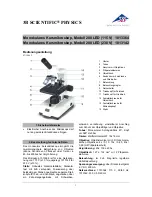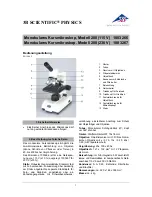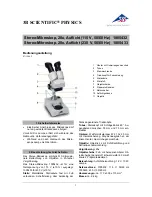Reviews:
No comments
Related manuals for 490 Series

54949
Brand: CEN-TECH Pages: 8

IOINV1MM-PM
Brand: ioLight Pages: 3

2L NG
Brand: Levenhuk Pages: 40

Model 44
Brand: Spencer Buffalo Pages: 34

N110 1013151
Brand: 3B SCIENTIFIC PHYSICS Pages: 4

SMZ1500
Brand: Nikon Pages: 37

1005434
Brand: 3B SCIENTIFIC PHYSICS Pages: 12

Axiolab Pol
Brand: Zeiss Pages: 116

400x
Brand: Hamlet Pages: 28

PROGRES GRYPHAX Series
Brand: Jenoptik Pages: 2

200 1013143
Brand: 3B SCIENTIFIC PHYSICS Pages: 12

200 1013142
Brand: 3B SCIENTIFIC PHYSICS Pages: 12

200 1003268
Brand: 3B SCIENTIFIC PHYSICS Pages: 12

200 1003266
Brand: 3B SCIENTIFIC PHYSICS Pages: 12

ME5
Brand: 3B SCIENTIFIC Pages: 4

77988
Brand: Levenhuk Pages: 40

1005432
Brand: 3B SCIENTIFIC PHYSICS Pages: 12

iScope IS.1152-EPL
Brand: Euromex Pages: 18

















